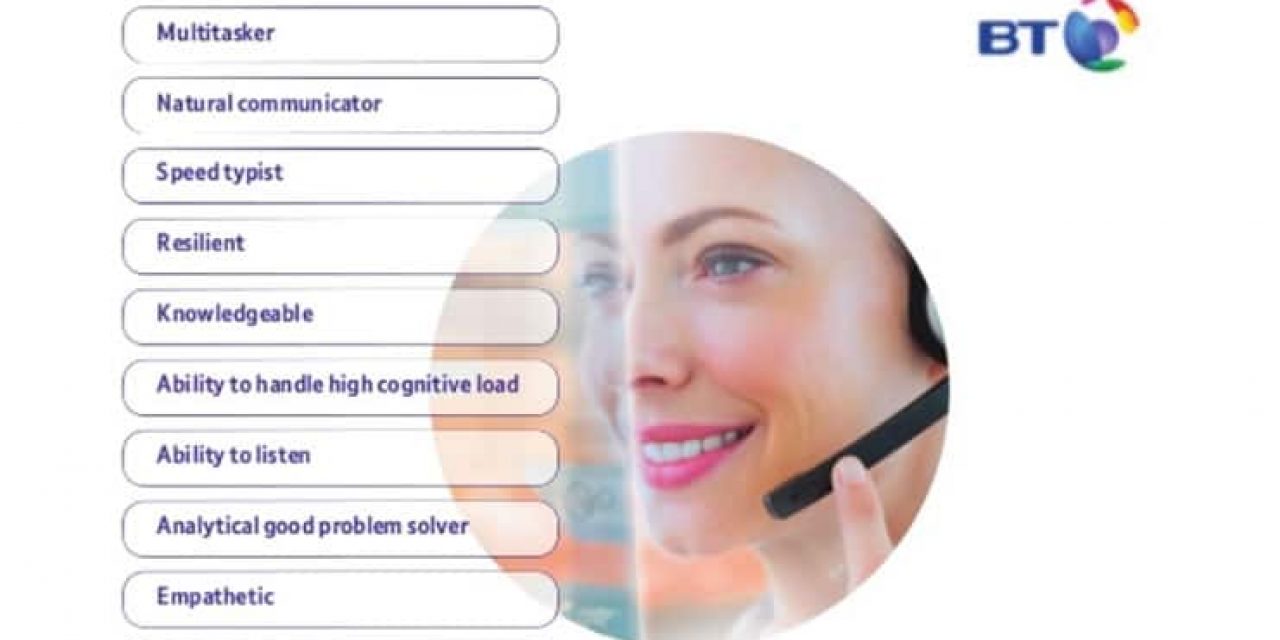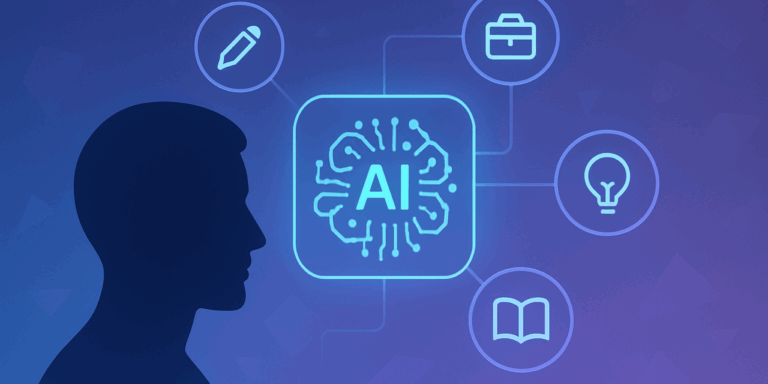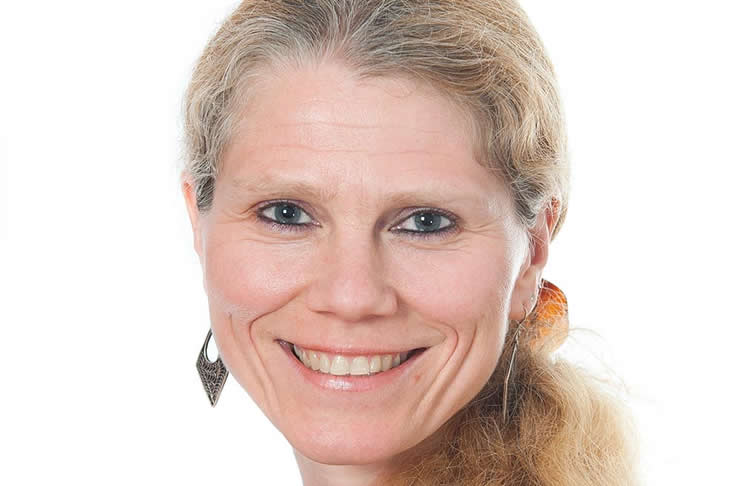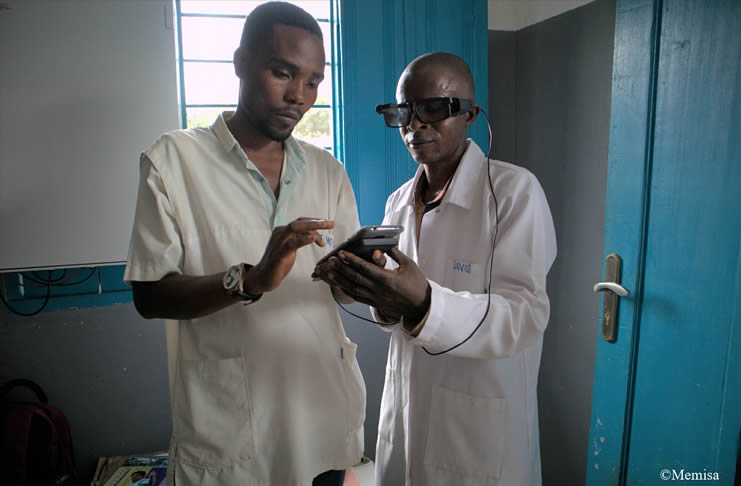The opening keynote in the Customer Service Excellence Arena at London’s 2014 Customer Contact Expo was titled” SuperAgent 2020: The future of the contact centre“.

It was presented by Dr. Nicola Millard, Customer Experience Futurologist at BT Global Services. Full disclosure: I’ve been working with BT Global Services for many years now, among others writing about customer experience, UC, digital transformation, cloud computing, contact centers and social customer service and I know Nicola (read an interview with her on contact centers at the occasion of an event we both attended here).
Nicola Millard’s presentation was based on research among industry professionals, essentially concluding that the skillset of tomorrow’s contact center agent needs to change, given a future in which contact centers will be increasingly handling, I quote “the complex and emotive stuff automation would struggle with”, as Nicola put it in an article on the website of the event organizers.
Knowledgeable contact center agents for customer value creation
How will the contact center of tomorrow look like? And what will be the role of the agent? What matters most is that agents are good and knowledgeable communicators across all those channels customers use – and increasingly will use.
Employee empowerment/engagement is key, as is the omnichannel customer experience the customer wants. Having such an omnichannel customer experience management approach simply pays. Aberdeen Group, for instance, found that companies offering omnichannel customer care report 91% better year-over-year customer retention rates than others.
Research from a variety of sources, showed that customers want knowledgeable agents and that the quality of the customer interaction will trump speed, even if today first contact resolution and quick response matter a lot – and will continue to do so. However, quick response to incoming calls or other forms of interaction, is not the same as fast resolutions.
People don’t want to wait until they can be heard and get quick access to a knowledgeable agent, even if this means being routed by one knowledgeable agent (who knows which other agent can respond) to another one (who knows the answer and can resolve the issue).
The most essential skills the contact centre advisor should have according to the below embedded research by BT are good communication skills (most important), followed by analytical/problem solving and product/service expertise.
As the image below shows, tomorrow’s “SuperAgent” is a multitasker, a natural communicator, a speed typist, resilient, knowledgeable, able to handle high cognitive load, able to listen, empathetic and has a positive can do attitude on top of the before mentioned analytical/problem solving skills etc.
And he or she is equipped and capable to handle exceptions as technologies continue to enable self-service but also knowledgeable about these digital tools as customers sometimes do need help using them.
Adding intelligence to the contact center
By removing manual processes and adding intelligence to the whole process of routing and getting access to the right information fast, the time of tomorrow’s contact center agent can be used for customer value creation. Contact center agents are becoming managers of a relationship hub, which the contact center of the future will be, Nicola says.
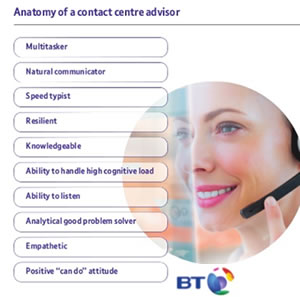
Even better of course would be that, based on a mix of customer interaction histories and data about the nature of the incoming call, all agents have access to the right response by disposing of a self-learning and ever growing and optimized repository of the right information/answers for the right requests. The same applies to other contact “channels”, with email being an essential one (hence the importance of email management).
These technologies, using artificial intelligence, exist. As a matter of fact, multiple technologies to optimize processes, improve customer experiences and freeing up agent’s time to focus on turning the contact center in the omnichannel customer interaction hub where quality, service, relationships and speed can be combined with cost reductions, exist.
However, they are less used than the customer and agent of today and tomorrow deserve. To quote Nicola Millard one more time: “The reality is that we are now 14 years on from 2000 and few of these visions (note: contact center predictions) have come true, despite technology being capable of delivering them. In fact, possibly the only thing that has changed in many contact centres are the carpets!” There are indeed still many opportunities left untouched and it shows in the many customer service and customer experience gaps. Point in case: the lack of response when it boils down to “emerging” channels such as Twitter, the fact that, as Nicola said in London, 64% of call center advisors don’t know what’s on their company website and the lack of a single customer interaction view we still see too often.
The contact center is not dead
You can check out all the results of the research in the slideshare paper below. Despite the increase of self-service and the clear desire of the modern customer to control as much as they can themselves, the contact center is far from dead, well on the contrary: its role is continuously evolving.
With technologies that focus on the omnichannel customer experience, collaboration, communication and intelligent information management, while empowering agents, contact centers can be in the very center of value creation and focus on what matters most: customers, intelligence, agents and experiences. With speed being a given and valuable relationships or simply removing the hurdles the customers experience the core customer-oriented challenge.
The latter, removing hurdles and obstacles is becoming a key priority in not just customer service but in all forms of customer-facing interactions and all related business functions, from web development to marketing, sales and beyond. Making things easier for the customer: isn’t that what true customer experience optimization is all about? In the contact center, it’s not a coiincidence that customer effort is taking center stage as the Twitter message above illustrates.
